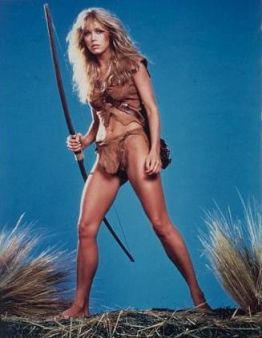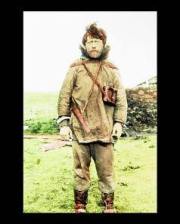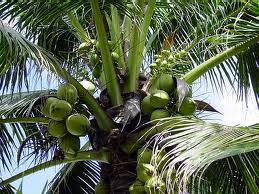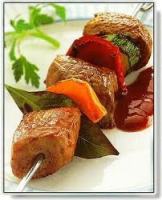|
The Paleo Diet
This diet, also known as the paleolithic diet, caveman diet or stone age diet, was the diet followed by our hunter-gatherer ancestors (paleo- means old or ancient). We're talking prior to 10,000 or so years ago. These people appear to have avoided the diseases of civilization. Over the past three decades much research has highlighted the health benefits to be gained from adopting such a diet and, just to make it clear, the paleo diet is the diet of humans before the advent of agriculture. What is wrong with agriculture? Anthropologist Dr. Jared Diamond calls agriculture ‘The worst mistake in human history’. Before the advent of agriculture the world was populated by hunter-gatherers. Skeletal studies have show that these people were taller than the farmers who would come after them, had strong bones, good teeth, no anaemia and an absence of disease. With the rise of farming, stature and bone strength decreased, and dental decay, anaemia and infectious disease increased. Could the movement away from a paleo diet have played a part? It seems so.
Arctic explorer and anthropologist Vilhjamur Stefansson investigated the incidence of cancer amongst the Eskimo people living on their traditional diet at the turn of the 19th century and found it was virtually non-existent. It was a different story amongst those Eskimo populations who had adopted a western diet, with high levels of the so-called diseases of civilisation, heart disease, cancer and diabetes prevalent. In the 1930’s Weston A. Price, a dentist, investigated nutrition and health among people on traditional diets around the world and found that they were free of chronic disease, dental decay and mental illness. They were strong, sturdy and attractive and produced children with ease. In the 1980’s Dr. Kerin O’dea took a group of Aboriginal people with diabetes back to a traditional lifestyle for seven weeks with a marked improvement in their diabetic symptoms and general health Researcher Staffan Lindeberg, in the 1990’s, studied the Kitavan people of the Trobriand Islands, Papua New Guinea . Tubers, fruit, fish and coconut were dietary staples in Kitava with negligible intake of western food.
Their saturated fat intake was high from coconut oil but ‘sudden cardiac death, stroke and exertion related chest pain were non-existent or extremely rare in Kitavans”. The people had low diastolic blood pressure and were very lean. There appears to be some benefit in adopting a Paleo diet but what exactly is the diet? Hunter-gatherers generally lacked grains, beans, potatoes (though they probably had yams), dairy products, and sugar, which are pretty much the staples of the modern world. These foods only became available in the Neolithic or new stone age, (from about 10, 000 years ago). Before their introduction human populations ate meat, chicken (i.e. birds), fish, eggs, nuts, seeds, fruit, berries, roots, tubers and organ meats. To give you an example of the protein levels, the 1948 American-Australian Scientific Expedition to Arnhem Land (Northern territory, Australia)investigated the diet of both coastal and inland bands of hunters and gatherers in Arnhem Land. These people were still following a traditional lifestyle, were hunter-gatherers and did not practise agriculture. They were following a paleo-diet. It was found that their calorie intake was adequate but both groups enjoyed protein-rich diets of more than four times the recommended level.
Our reliance on cereal grains (wheat, barley, corn, rice, and oats), milk, potatoes and beans has caused us problems because we did not evolve to eat them. Lets look at grains as an example. They contain a host of anti-nutrients, enzyme blockers, and lectins and cannot be eaten in their raw state. Cooking allows them to be eaten and they are a rich source of carbohydrate. However, our traditional environment was low in abundant sources of concentrated carbohydrate. Our bodies were never designed for such high levels of quickly digested carbohydrates as are available today. Our bodies tend to store excess carbs as fat. Given the almost limitless availability of carbohydrates in the modern world is it any wonder that obesity has become an epidemic. It is difficult to get fat on a paleo diet. Also, these grain products are rapidly digested, giving them a high glycemic index. Ingesting grains is similar to the effect of raw sugar on blood glucose levels (a sugar spike) making our bodies release insulin to take sugar out of the blood. Over time this constant production of insulin can produce hyper-insulinaemia and insulin resistance, neither of which is good. In paleolithic times, even when carbohydrates were available in large quantities, they contained forms like inulin which didn't raise blood sugar levels quickly. The advantages of the Paleo diet are – increased energy, weight loss and maintenance of your ideal weight, and you will feel good. Children and paleo I brought my daughter up on this diet for the first two years of her life. She drank breast milk for the first 5 months and then a paleo diet for the next 17 months. She consumed no dairy products, grains, sugar, beans, potatoes or soy products. She was sick one day in that whole time and was incredibly healthy. After I separated from her mother she gradually began eating a Standard American or Standard Australian diet(SAD). Luckily, the foundation of paleolithic nutrition seemed to give her a good start and she has been a pretty healthy kid in spite of sub-standard nutrition. recently at the age of 14 she has become very health conscious and decided to follow a paleodiet again. You can give kids a good start with this diet but I suspect by teenage years consumer society will make it difficult. Even younger it is hard. My daughter's kindergarten held a McDonalds day occasionally which is a good way to get kids hooked on bad food from an early age. Still it is what they eat 95% of the time that will effect their health so the occasional foray into the dark side won't kill them. So what is involved in the paleo diet?
Eat – meat, chicken, fish, eggs, fruits (especially low GI fruits like strawberries, blueberries, raspberries, melons, cherries - but keep the amounts small), vegetables (including root vegetables), raw nuts and seeds. Coconut milk and coconut oil also seems to be fine. The fat level in Australian meat is quite low (around 4%, kangaroo about 2%) but avoid grain fed meats as they swing the balance of fats away from Omega 3 fats and increase the Omega 6 which leads to inflammation in your body . You may have to shop around in other countries. Exclude – grains (wheat, rice, maize, barley, oats etc, including bread and pasta), beans (including string, kidney, peas and lentils), dairy products, potatoes or sweet potatoes, peanuts and cashews (neither of which is a nut), soy products, oils (other than olive oil or coconut oil in limited amounts), margarine, salt and sugar (this includes all artificial sweeteners and natural alternatives like honey,stevia,and xylitol).
Sample menu Breakfast – fruit, bacon and eggs Snack – nuts, seeds and fruit Lunch – chicken or tuna salad Snack – carrot and celery sticks with avocado dip Dinner – steak and cooked vegetables or salad
There are two choices with the paleo diet. Go slow or go cold turkey. If you choose to go slow then I would suggest cutting out sugar first (including any substitutes), as sugar is probably the most dangerous food for your health and it is in almost every processed food. Gradually add more vegetables to your diet, both raw and cooked. Start cutting down on pasta, rice, potatoes and bread when making meal choices and go for either more meat or more vegetables. If you are going to continue to use a grain then rice has the least complications. When you go shopping stick to the outer areas of the supermarket, which is where the meat, fruit and vegetables are. The inner shelves contain mainly useless concentrated, denatured carbs in one form or another.
Note: If you are thin (like I was)then a paleo diet is not the best way to go if you want to gain weight, at least initially. It can be done but is difficult. I was always thin but last year I managed to put on 8 kg (17.5 lbs) in 6 weeks. I did not use a paleo-diet and with the muscle I also gained some fat. So, I went on the paleo-diet after the weight gain to remove the fat. For naturally thin people a paleo diet will keep you healthy but will not help you put on weight so I recommend a different approach and you can follow a paleo diet once you have put on the weight. This different approach is on my 'How to gain weight' page here
Transition If you change to a paleolithic diet by going cold turkey, which is my preferred option as I am a bit of an all or nothing guy, then you will most likely feel bad for anything from a few days to a couple of weeks. During this time you may feel tired and sluggish or when you get up quickly you may feel dizzy or light-headed but these experiences will disappear within a few days or weeks. Your body is not getting the immediate hit of carbs and will react to it. You can slow any negative process down by having some concentrated carbohydrate if you are really feeling bad but it is better to tough it out. My theory is that the severity of reaction you will experience is dependent on the level of candida (a yeast) in your system. Candida thrives on sugars and when you remove them from the diet the candida lets you know. It seems possible to minimise the candida through either a) colonics, or b) olive leaf extract (available from health food stores). I have tried both and both will remove or kill off the yeast. You can't get rid of it completely but you can make it manageable. The first time I adopted a paleo diet I used the olive leaf extract and it took about two weeks before I started to feel OK. The next time I went on the diet I had a colonic every week for about three months before I started. This is an expensive option but the withdrawal effects from concentrated carbohydrates only lasted about four days as I cleared a lot of candida out of my system. If you are like me and you consume concentrated carbs during this time you will soon see how badly they can affect you. My wife brought home some Vietnamese rolls one day for lunch and I didn’t want to hurt her feelings so I ate them. They contained rice noodles and the outside wrapping was a rice pastry. Within ten minutes I was feeling groggy and couldn’t keep my eyes open. I fell asleep and woke up an hour later. Recently, we were celebrating our first anniversary and I drank a shot glass full of Baileys Irish Cream (a liqueur). It is very sweet and again within ten minutes I was falling asleep but this time it only lasted for about 15 minutes. The same thing can happen with sports drinks as well so stay away from them. They are just expensive, liquid sugar. I once consumed 'nutrient water' while driving. It is full of fructose (fruit sugar). I started to nod off and had to pull the car to the kerb and sleep for 30 minutes before the effects disappeared. You may not have such a strong reaction but they are still doing harm. If you have problems with being overweight the paleo diet will normalise your body weight. If you react badly to carbs like I do then this diet will keep your blood sugar on an even keel and you will feel good. I believe this is the ideal diet for humans but not everyone would be comfortable with it so you might want to try another diet more suitable for you, such as The Zone Diet, Vegetarian diet, Atkins Diet, South Beach Diet or
The Ornish Diet
If you are concerned with weight loss then any of them will work but if you are concerned with health as well then the Zone diet is probably the best way to go for most people though I think that the paleo-diet is the best of them all. A paleo-diet is usually part of a paleo-lifestyle. This means diet, exercise, sunshine and adequate sleep. Exercise is a big component of a paleo-lifestyle and you will get better results if you include it. So, if you are concerned with fitness and want to get in shape quickly have a look at
this program
based on evolutionary principles If you would like to learn more about the paleo diet you can purchase any of the books below by clicking on them. Good luck.
Leave Paleo Diet page and return to Health page
|









